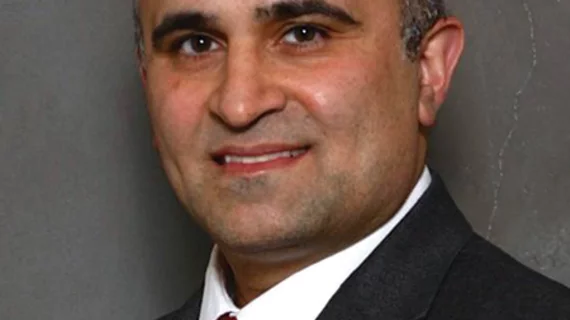Diversity & Diagnosis of Women & Minorities
Interventional cardiologists make decisions every day about whether interventions will favorably alter patients’ outcomes. How often, however, do we reflect about other factors that affect our patients’ outcomes?
Tale of two patients
During a recent clinic, two consecutive patients highlighted the fact that, regardless of my efforts, patients’ outcomes are often pre-determined.
My first patient was a 48-year-old white male and the CEO of a nationally successful company. He was referred for follow-up of an increased intimal medial thickness picked up on carotid ultrasound from an “executive work-up.” His work-up also included a chest X-ray, exercise stress test, an electrocardiogram (ECG), a cardiac computed tomography (CT) scan showing normal coronary arteries and a calcium score of <10 and an echocardiogram indicating normal left ventricular (LV) function. As he was asymptomatic, I advised that he continue with his excellent lifestyle and high-potency statins.
The second patient was a 53-year-old, diabetic, First Nations woman referred due to New York Heart Association class IV symptoms.
She had not had an ECG, an X-ray or an echocardiogram. Her physical examination was remarkable for elevated neck veins, displaced apex, an S3 and an ECG showing LV enlargement with Q waves anteriorly. After immediate admission to the hospital and an appropriate work-up, we confirmed that she had severe LV dysfunction and three-vessel disease with an occluded left anterior descending artery and a nonviable anterior wall, as seen on cardiac magnetic resonance imaging. She was discharged home one week later on optimally tolerated medical therapy.
The wide range in these patients' presentations is a sobering reminder of how health disparities can adversely affect health outcomes across population subgroups. Health disparities are often linked to social, economic and environmental disadvantages. The Society for Cardiovascular Angiography and Interventions Women in Innovations (SCAI-WIN) Committee published a statement on gender-based issues in interventional cardiology that addresses these issues (Catheter Cardiovasc Interv 2010;72[2]:145-52).
Race & gender are health determinants
Although there are many social determinants of health, race and gender are the two most important. A man-made attempt at classifying humans, race has come to include a range of expressions and has become an elixir with varying proportions of social and biological components. Although race can be perceived as a continuous social construct and not a fixed science, it plays a role in predicting cardiovascular prognosis in multivariate analysis. Gender is not a man-made tool, and for the most part is very black and white (pardon the pun). Ethnic minorities and women routinely have delayed diagnoses and interventions and poor access to healthcare settings, and they are more likely to be last to follow up after interventions.
It is time to recognize racial and ethnic disparities in healthcare. We must accept that there continues to be disparity in how we approach healthcare in different population subgroups. Healthy People 2020 defines health equity as attainment of the highest level of health for all people and states, “Achieving health equity requires valuing everyone equally with focused and ongoing societal efforts to address avoidable inequalities, historical and contemporary injustices” (www.healthypeople.gov/2020).
Such lingo may seem to belong more in a sociology department staff lounge than the cath lab lunchroom, but perhaps it is time for cath labs to change. After all, the faces of the patients we treat are changing, and changing fast. According to the Pew Research Center, 54 million Hispanics reside in the United States and the expectation is 129 million (31 percent of the population) by 2060. The 2012 U.S. Census showed that Asians were the fastest growing racial group from 2000 to 2010. Although the number of people over 65 years old also is expected to increase over the next several decades, the growth rate in whites has been slower than in blacks, Hispanics and Asians, highlighting the need for further study in these populations. So, here is one preparatory checklist:
Identify health disparity as an issue in enabling patients to seek optimal health.
Understand that proposed interventions are only a small piece of patients’ healthcare picture and that their outcomes have to a great extent already been predetermined.
Recognize that race, however ill defined, and gender both predict and prognosticate disease.
Know that the ethnic make-up of the patients we will be treating will change significantly in the next two decades.
What were the barriers that prevented my 53-year-old, diabetic, First Nations female patient from seeing a physician earlier? If resources had been allocated differently, would my asymptomatic CEO patient received a carotid ultrasound and a cardiac CT scan?
Both race and ethnicity have political and policy implications for resource allocation, community engagement and assessment of public health outcomes. In evolutionary terms, however, there is insufficient speciation among human racial groups to establish biologically and scientifically plausible conclusions. There is only one race—the human race.
Payam Dehghani, MD, is an interventional cardiologist in the Regina Qu’Appelle Health Region, director of the Adults with Structural Heart Disease Clinic, clinical co-director of the Prairie Vascular Research Network, and an assistant professor at the University of Saskatchewan in Canada. At SCAI, he is a 2015-17 SCAI Emerging Leader Mentorship fellow.

